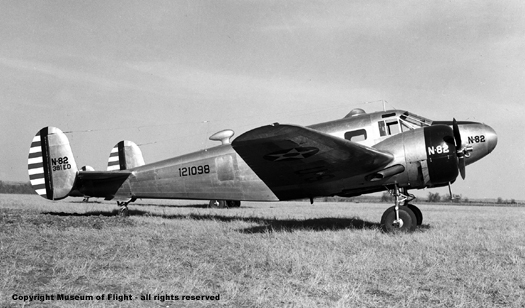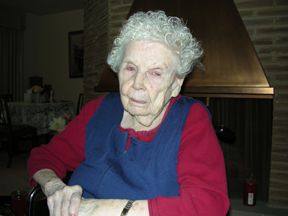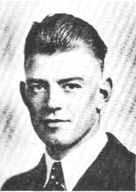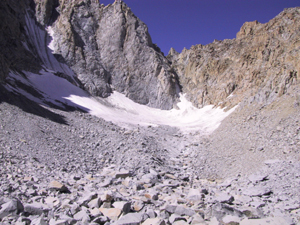 |
|||||||||||||||||
|
Beech 18 AT-7 Navigator Copyright Museum of Flight - all rights reserved November, 2007 |
|||||||||||||||||
|
FINAL FLIGHT a blog by Peter Stekel author[at]peterstekel.com FINAL FLIGHT is the story of four aviators lost in Sequoia & Kings Canyon National Parks on November 18, 1942 |
|||||||||||||||||
|
FINAL FLIGHT: coming in late 2009 from Wilderness Press |
|||||||||||||||||
|
Read more about FINAL FLIGHT here. |
|||||||||||||||||
|
November 29, 2007 I rented a truly atrocious movie the other night - Flight of the Phoenix, starring Dennis Quaid and a host of others. I've been impressed with some of Quaid's other movies. He can be quite believable in some [Come See the Paradise], passable in the purely commercial [The Big Easy, The Alamo, - dig those sideburns!] but also equally a hack [Everybody's All-American]. This particular movie was pretty obviously one made for money, not art. Now, I'm pretty drawn to airplane crash movies and books right now, for obvious reasons. Anything that can give me any sort of insight as to what happens in the cockpit of an airplane when "the chips are down" is very important to a person [like me] who's sole experience in airplanes is as a passenger [I've piloted one airplane, with an instructor]. Granted, anybody who believes movies are accurate representations of reality deserves every rude awakening they experience. But, I am also interested in the visual experience and movies do that very well - even if the authors have no real idea of what they are representing. I interviewed William Langewiesche a couple of months ago and he told me quite a bit. Being a writer and a pilot, he knew exactly what I meant when I asked him what must it be like inside the cockpit of an airplane when nothing looked good. "You can't sustain panic very long," he told me. After that, you start looking for solutions. Some of you must be as old as I am [I was born in 1952- Ouch! That seems aged!] and remember the 1965 movie version of Flight of the Phoenix with Jimmy Stewart who, apparently, was a pilot as well as an actor. I have good memories of that movie [I was 12 or 13 when I saw it, and it's currently on reserve for me at the Seattle Public Library]. I saw a short piece of it on AMC recently but was distracted by the haircuts. OK. I'm shallow. The 2004 version strikes me as a poor imitation - full of stereotypical characters, none of whom exhibit any depth. It's easy to see who will crack under pressure or rise [like yeasted dough] to the hero classification. And the filmmakers telegraph who will die and who they want you to think will die with, apparently, no idea that their audience is smarter than they. This is a style perfected by Agatha Christie in her extremely popular mystery novels. What I am interested in goes beyond characters who "play to type." What I want to know about is real people. I've begun reading the novel that the movies were based upon. It's written by Elleston Trevor, born as Trevor-Dudley Smith [he published over 100 thrillers, mysteries, plays sort stories, etc] including books with the pseudonym Adam Hall [British agent Quiller] and Simon Rattray [crime-solver Hugo Bishop]. Trevor, according to the biography published with the 2004 Harper Entertainment paperback re-release of Flight of the Phoenix, served in the RAF during WWII as flight engineer - which explains the mechanical and navigation details of the first chapters. After which the novel has all the elements of an Ernest K. Gann book [stock characters saying and doing stock things]. Gann was a great storyteller, and by all accounts a great pilot, but... well... The High and the Mighty was Stagecoach in an airplane. What annoys me so much about the Dennis Quaid film is that it reduces a horrendous event into a feel-good experience. We all know from watching the evening news that the survivorship rate from an airplane crash is close to zero. And those who do survive, like the soccer team in the Andes during the 1970s, often resort to terrible behaviors in order to live. Yet the whole genre of airplane crash movies and books [there's a whole television series devoted to this right now - which my normally TV-adverse mother-in-law has to watch every week] always works under the assumption that what we want is something heroic and uplifting. I submit that what is more interesting than a created experience is one that is truthful. I've found that reality is always more dramatic than fiction. |
|||||||||||||||||
| November 16, 2007 [Ruth Mortenson] I was able to meet Ruth Mortenson this afternoon. Though her health is good, at 97 years of age she has lost most of her memory. She was happy to pose for a photo but she wanted to straighten out her hair and tidy up a bit first. Miss Mortenson did manage to tell me that her brother |
|||||||||||||||||
| Melvin [he changed his name when he went to college] was a good-looking man, very serious and had mechanical abilities. Her cousins are in their mid 70s and still live in Moscow, ID. I was able to get their phone number. I'm hoping they will have photos and, perhaps, letters that John Mortenson wrote to his family. These are the things that will bring life to the aviator's story. I'll be calling them in the coming weeks. |
 |
||||||||||||||||
| November 7,
2007 [Ruth Mortenson] I spoke with Erlinda, Ruth Mortenson's primary caregiver, this morning. Miss Mortenson fell over the weekend and has been confined to bed. She hasn't been eating either. Evidently the weekend caregiver didn't take Miss Mortenson to the doctor for an examination and when Erlinda returned on Monday, she had to wait until yesterday [Tuesday] because the doctor wasn't in the office. I asked Erlinda about Miss Mortenson's memory and mental state. She has suffered from dementia but her memory is still good. "But she needs her strength too," and until she can get out of bed, Erlinda doesn't want any visitors. Erlinda says that Miss Mortenson won't eat if there are too many people around. |
|||||||||||||||||
| November 2, 2007 [Other
Missing Aviators] I'm gratified at how this story resonates with people. Many have written to me after seeing the story reported in the newspaper or on television. Airplane experts and owners of Beech 18s have contacted me with information about the engines I found in the ice of Mendel Glacier. I have also received mail from people who are hoping that I have come across something that refers to a family member still missing from World War II. I got an email this morning from Michele Aucoin. It's about her uncle, Henry Neal Henson. He was stationed in the San Francisco area on the USS Bunker Hill, practicing takeoffs and landings in San Francisco Bay on a ship retrofitted to work as an aircraft carrier. "He joined the Navy when he was 15 or 16 years old, by lying about his age and having his mother [my grandmother] collaborate the lie." "He had the soul of a poet and frequently wrote poetry to his mother and his girlfriend. He had just mailed a poem entitled "The Last Flight" - yes, it is extremely eerie that you have used similar words on your site. His last flight ended with a crash into San Francisco Bay. I was always told that nothing was found except the wing and tail of the plane. The girlfriend received the poem after she had received the news of his death." The family never got much in the way of information about what happened and now, all the members of that generation are gone. Michele has inherited all of Uncle Henry's memorabilia and is, like her mother and grandmother before her, trying to find out as much of the story as she can. All of this reminds me of something I was told by Pat Macha. Not much effort was ever devoted to recovering the remains of the over 35,000 men and women aircraft service personnel killed during World War II on training flights. If you know anything about Henry Neal Henson, please write to me and I will put you in contact with Michele. November 1, 2007 [More on Ruth Mortenson] A disappointing day. This morning I got a call from Erlinda just as I was getting ready to leave the house. She said she had an "incident" last night and had to call 911 because of her heart. She asked that I call next week to re-schedule. It was difficult to understand if the real reason had to do with her not wanting me to come visit or with Ruth Morgenson not having the heart to talk about her baby brother. |
|||||||||||||||||
| October 31, 2007 [Captain Roy F. Sulzbacher] | |||||||||||||||||
 |
The San Francisco City Library replied by US Mail to my request about Roy F. Sulzbacher, confirming that Capt. Sulzbacher died 2 October 1948. Unfortunately, the obituary [PDF] they provided from the San Francisco Examiner on Sunday, October 3, 1948 on Page 29, said nothing about why a 31 year old man could have died so young. And, there was no indication if any correlation existed between his death and his mission less than one month earlier to Kings Canyon National Park. | ||||||||||||||||
| Roy F. Sulzbacher- High School of Commerce, San Francisco, CA 1934 | |||||||||||||||||
Capt. Sulzbacher commanded at team of about six "crack mountain troops" from Ft. Lewis, Washington [south of Seattle] that spent approximately four days, between about 9 - 13 September 1948 on "Darwin Glacier" [sic] searching for and "recovering" [sic] the bodies of four aviators lost since 18 November 1942. However, I was able to learn that Capt. Sulzbacher had married [wife: Julia] and was the father of two daughters [Marjorie & Barbara]. This was news to me. All Marge had been able to discover, using her genealogy sources, was that Bay Area native, Capt. Sulzbacher had an older brother, Arnold, born circa 1910 [with a son, Arnold R., perhaps a graduate of Abraham Lincoln High School] and that their father, Frederick [age 34 and alive at the 1920 federal census], was not living as of the 1930 census. Frederick obviously died young and Marge felt that Roy F. may have died young from the same thing - perhaps a heart attack. Captain Roy F. Sulzbacher was buried at Golden Gate National Cemetery on October 4, 1948 after private services at Martin & Brown's, 1515 Scott Street in San Francisco. According to records at the Golden Gate National Cemetery, he was a Major at his death though his obit in the newspaper refers to him as a captain. Was he promoted prior to, or after, his death? A friend of mine says that, before modern budget cuts, it was typical of recently deceased career military to be promoted so their heirs would receive a larger pension. Capt. Sulzbacher's plot is at Section G Site 2017-A where he is listed at Captain Roy F. Sulzbacker. Golden Gate National Cemetery is the same place where Lt. Gamber and his three cadets were "interned" after their "recovery" by Capt. Sulzbacher's team. Their plot is in Section F Site 43 - or just across the street. How ironic. At this time I have no further information about his mother, Ethel Mary Sulzbacher. Her younger brother, James Jerome, lived with the Sulzbacher family [according to the 1920 and 1930 census]. Gary Simmons from the Abraham Lincoln High School Alumni Association replied to my query that Arnold R. Sulzbacher [who would have been Roy F. Sulzbacher's nephew] died in 1 July 1994 in Napa, California. "He was married to a Alyce M. Fox (not an alum of Lincoln High School) in 1961 and was divorced in 1967. They MAY have had one child, Marilyn M. Sulzbacher. Born on March 7, 1966 in San Francisco." He has three separate addresses for Alyce [two in Napa, CA and one in Vacaville, CA], but nothing for Marilyn. |
|||||||||||||||||
|
Mendel Glacier, Kings Canyon National Park |
|||||||||||||||||
|
|||||||||||||||||
|
|
|||||||||||||||||
|
FINAL FLIGHT: coming in late 2009 from Wilderness Press |
|||||||||||||||||


